Ginestra Giovene Amaldi: Scientific dissemination? Its name is woman
"The gramophone without records. The electromagnetic recording of sound" reads the title of one of Ginestra Giovene's works, but how does she explain the phenomenon? How can she manage to make the radio audience understand how this new technological discovery works? Her explanation goes as follows: The radio and gramophone [...] have sometimes joined together in close and useful collaboration [...] Some stations have even broadcast an entire work, with the performance preceded by the announcement "Phonographic broadcast." Radio listeners may then have been surprised at having taken no notice of the moment of the ending of the disk recording, possibly having imagined a need for a complicated alternation between two gramophones, and admiring the expertise allowing such complete continuity of sound. If the listeners, however, had also owned a television set in addition to the radio, they would have been somewhat surprised to see, not two gramophones, nor even just one, but to see only a thin, steel strip unwinding from one reel and winding around another one, while passing in front of a small device. Already from these few lines it is easy to understand Ginestra's great ability to make the language of science simple and approachable, even for the "generalist" audiences of radio and television, or for middle and high school students.
A woman of notable communication skills, Ginestra Giovene Amaldi was also much more: a physicist who took part, even if briefly, in the work group that had formed around Fermi and Corbino at the physics institute on Via Panisperna; a wife and mother; a writer; and such an expert swimmer that she was selected for the Italian swimming team for the Olympics.
She was born in Naples on 15 July 1910 to Nestore, a railway engineer, and Giulia Cristiano, a kindergarten teacher. It is said her name was chosen in homage to the famous Leopardi poem. While Ginestra was young her family moved to Rome, where she attended the Torquato Tasso Classical High School, graduating 10 October 1927. In the same year she enrolled in the faculty of mathematical, physical, and natural sciences at R. Università di Roma (now Sapienza), graduating on 30 November 1931 in physics, with a dissertation entitled "Le temperature stellari" (Stellar temperatures) and a second thesis entitled "La teoria quantistica del nucleo atomico" (The quantum theory of the atomic nucleus). In 1931 she obtained a scholarship from the CNR, following a specialist course in radio communications. The same year she began to attend the physics institute at Via Panisperna as a volunteer, with the hopes of obtaining a job as a researcher, however Corbino, the institute director, did not look favorably on the entry of women into the institute. At Via Panisperna, Ginestra met Edoardo Amaldi, whom she married in 1933, and with whom she had four children, Ugo, Paola, Francesco, and Daniela. In 1934 she began working at the National Institute for Calculus Applications at the CNR, where she collaborated actively in editing the magazine "La Ricerca Scientifica", contributing to the diffusion abroad of the results achieved by Fermi's group. Perhaps it was from her experience in the editing of this magazine that her passion for scientific dissemination was born, and after leaving the institute (INAC), she dedicated herself to this new activity with the same enthusiasm applied in her astronomical and particle physics research.
Her first book, Alchimie del nostro tempo (Alchemies of our time), was published in 1936, co-written with Laura Cappon, Enrico Fermi's wife, which explained to a general public the development of the concept of the atom, from antiquity up to the discoveries at the Via Panisperna laboratory.
The war brought terrible years for Ginestra: she saw her husband leave for the front and her friends, Enrico and Laura Fermi, flee from Italy, for fear of the racial laws, to take refuge in the United States; but above all, her daughter Paola died in 1944, leaving a pain that marked the life of this woman who was both fragile and strong at the same time.
Her best-known book, even beyond Italy, Questo mondo grande e terribile (This great and terrible world), was published by Garzanti in 1951 and translated into various languages. Aimed at children between 10 and 14, its writing had already begun, according to her son Ugo, before the Allied entry into Rome.
Between 1950 and 1960 she wrote numerous articles and encyclopedia entries, and as an author of texts and as narrator, she collaborated on a series of radio and television programs of an educational nature: "Classe unica" (1954), "Telescuola" (1959 -1961), "Piccola enciclopedia popolare" (Small popular encyclopedia) (1962-1965), "Almanac" (1963-1965), "Università Marconi" (1965-1968), "Rassegne delle scienze" (Science Reviews) (1963-1968). The "Telescuola" transmission presented some 80 thirty-minute programs live, and for "Almanacco," she wrote the texts for some 20 films directed by Giorgio Ponti.
Together with her husband Edoardo Amaldi, Ginestra also authored a series of physics texts for high schools published by Zanichelli, the first of which was Elementi di fisica ad uso degli istituti commerciali (Elements of physics for use by commercial institutes), published in 1946.
In 1971 she was afflicted with a cerebral aneurysm, which put her in a coma for a long time. When she woke up, she was partially paralyzed, which prevented her from continuing to work.
Ginestra Giovene Amaldi died in Rome on 22 November 1994.
I believe that never in any other circumstance have I found myself in the face of such a difficult dilemma. But the idea soon prevailed in me that by remaining in Italy, I would be able to contribute to preserving a form of culture, very probably much more useful from a general point of view than what my scientific contribution to the great river of physics research in the United States could have been. This is how Edoardo Amaldi motivated his choice in 1946 to refuse a chair at the University of Chicago and to return to Italy, to re-establish research in the field of physics, in a country materially and morally destroyed by the war. Certainly, an Italy that was very different from the one that had seen the Fermi group's research on atoms, of which Amaldi made part, before racial laws and the war ordained its end.
But where did this ethical sense come from, and what consequences would the choice have had, otherwise, not only on Italian physics but also in the construction of supranational bodies? Edoardo Amaldi was born in Carpineto Piacentino on 5 September 1908, to Ugo, a university professor of mathematics, and Luisa Basini. He attended classical high school, first in Padua and then in Rome, where he graduated in 1925. In the same year he enrolled in the program for an engineering degree, later changing to physics, then graduating with honors in 1929 with a thesis on the Raman Effect in benzene. After his military service, he won a Benito Mussolini Scholarship in 1931 from the Opera Alberoni di Piacenza and spent a period of study in Leipzig. At the end of 1931 he returned to Rome, where he became assistant to Orso Mario Corbino, director of the physics institute at the University of Rome. In 1933 he married Ginestra Giovene, also a physicist, and who frequented the institute at Via Panisperna; the two had four children, Ugo, Paola (who died of a fever in 1944), Francesco, and Daniela. In 1934 he spent a period of study at Cavendish College to bolster his theoretical and experimental foundations, to allow him to make a greater contribution to the research on atoms the Fermi group was conducting at Via Panisperna. In 1937 he won the competition for a chair at the University of Cagliari; but in the same year he was called back to the University of Rome to replace Corbino, after his sudden death, as chair of experimental physics, where he remained for 40 years. Also in 1937, with Fermi and Rasetti, he constructed the first neutron generator. The successes of the "Via Panisperna boys" in nuclear research had international resonance, to the point that Fermi was awarded the Nobel Prize for Physics. But it was during those same years that the Fascist regime first launched its "racial laws," and then dragged Italy into the Second World War, all of which led to the dispersion of the members of the Fermi group into various parts of the world.
The only one to remain in Italy during those turbulent and difficult years was Amaldi, who worked to concentrate a group of good researchers at the Institute at Rome. Being anti-Fascist, during the war he moved closer to the Partito d'Azione (Party for Action), and at the end of the war he was close to the positions of Ugo La Malfa's Partito Repubblicano. In 1940 he was called back to arms and sent to Africa, but shortly afterward he was discharged and recalled to Rome at the request of the CNR. The work of the physicists grouped around Amaldi concentrated on nuclear fission in that period, but in 1941, in order not to risk involvement in research for war purposes, such research was abandoned in favor of research on cosmic rays. In 1945, the CNR built the Testa Grigia Laboratory to facilitate the study of cosmic rays. At the end of the war, Amaldi was concerned with rebuilding physics laboratories and research groups. To obtain government support and necessary funding, in 1946 he sent a detailed report on the state of physics in Italy to the chemist Luigi Morandi and to Vittorio Valletta, the CEO of Fiat. After the war, Amaldi collaborated actively in the construction of various institutes and research centers dealing with the peaceful use of nuclear energy: he helped create CERN (the European Center for Nuclear Research), of which he was secretary from 1952-1954; and in 1951, with Gilberto Bernardini, he founded the INFN (the Italian National Institute of Nuclear Physics), over which he presided from 1960 to 1965. In 1958 he promoted the construction of the Frascati Electron Synchrotron, built under the direction of Giorgio Salvini and with the collaboration of Bruno Touschek. He was also one of the promoters of the ESA (European Space Agency), and in 1957 he joined the Pugwash movement, aimed at nuclear disarmament, and founded the Union of Scientists for Disarmament. Amaldi was a member of many Italian and foreign academies, including the Accademia dei Lincei, over which he presided from 1988. First as member, then as president, of Italy's most prestigious academy, Amaldi gave the starting impulses to the constitution of a commission for civil rights and to a working group for international security and arms control (SICA). In the 1950s, while studying cosmic rays, he came very close to the discovery of the antiproton, and during the last years of his scientific career, he dedicated himself to the study of gravitational waves. After holding his last lecture at Sapienza in 1976, he was appointed professor emeritus in 1984, and in 1985 he was appointed Commendatore by the President of the Republic, Sandro Pertini. He died in Rome on 5 December 1989.
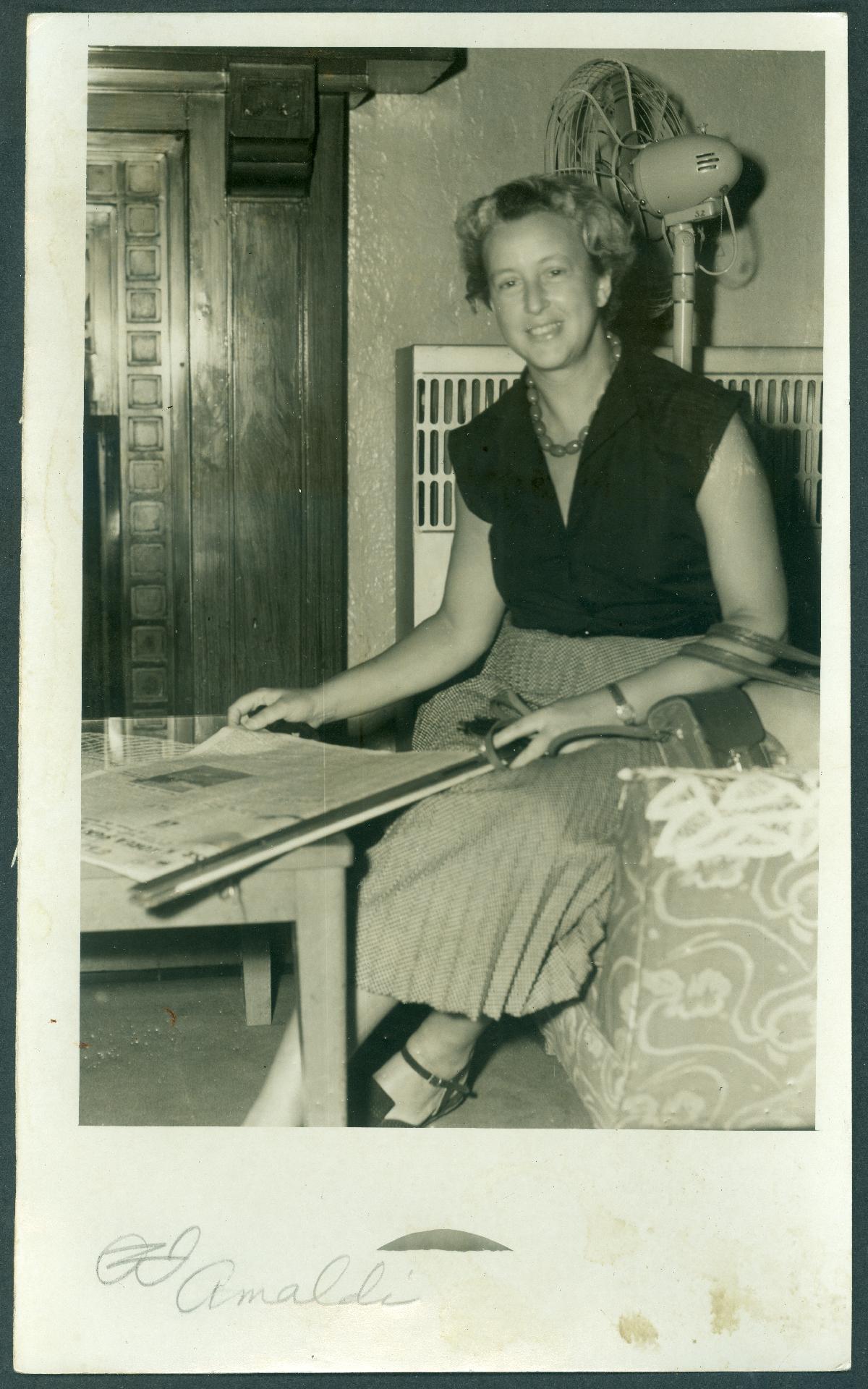
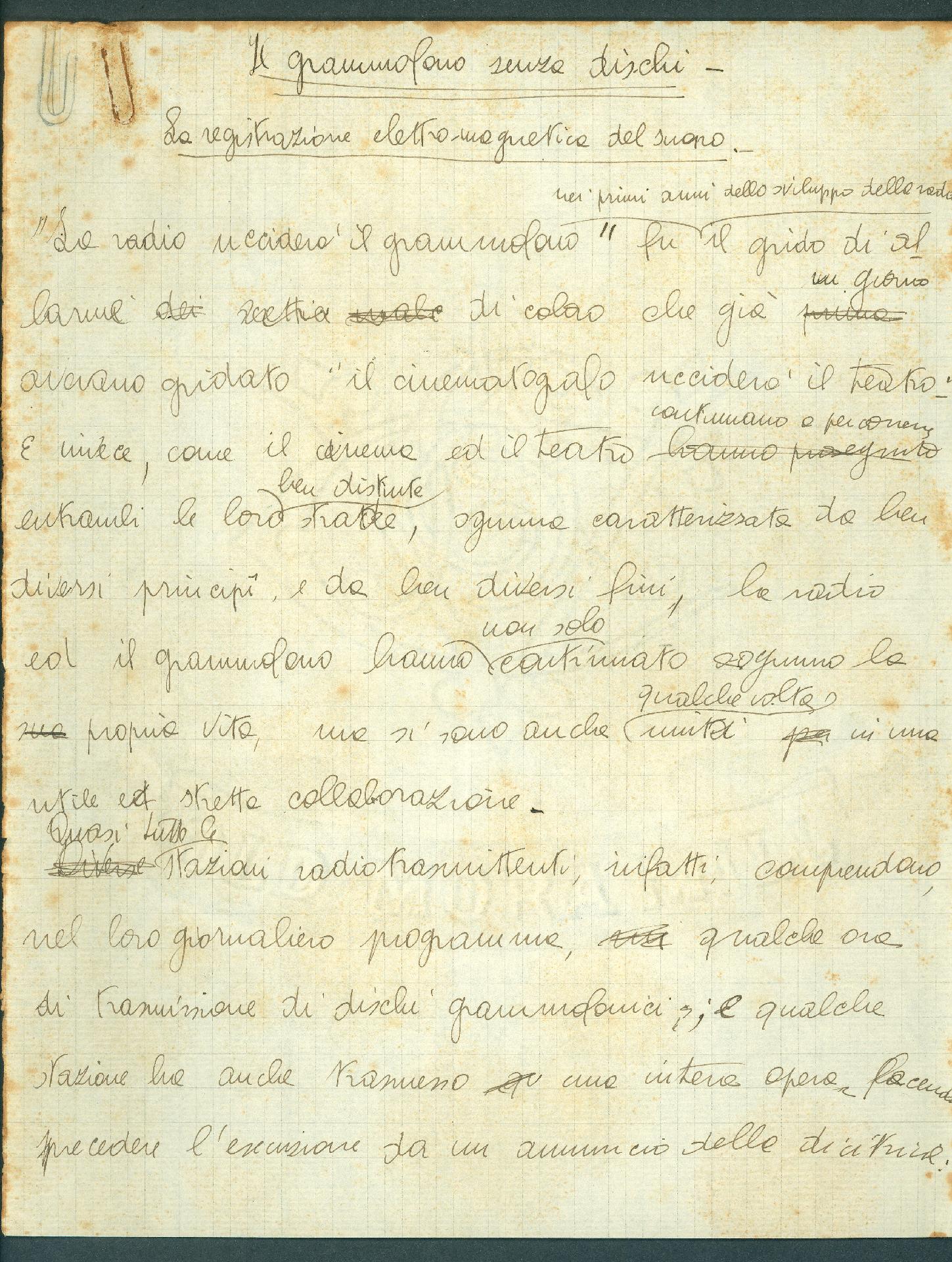

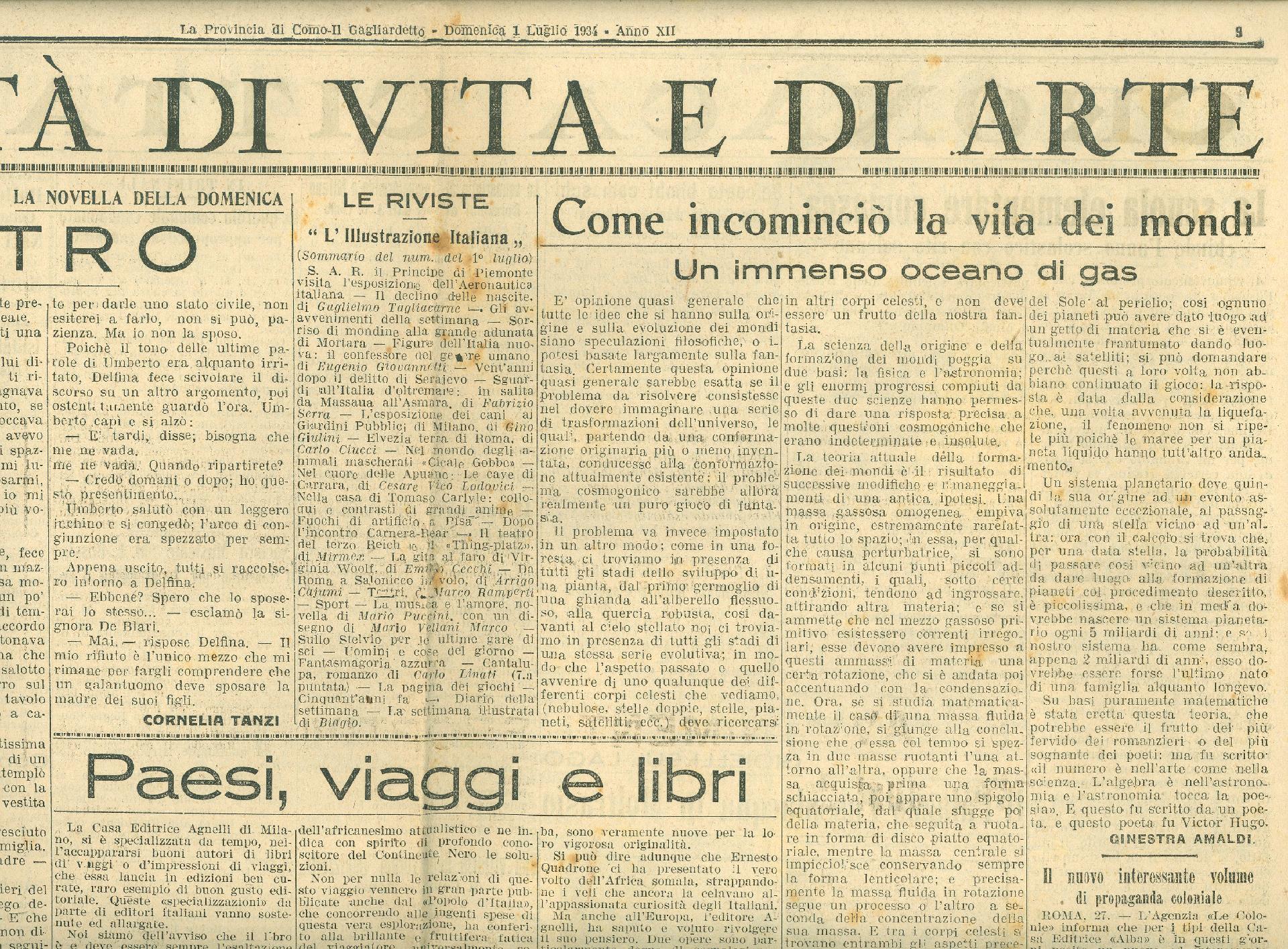
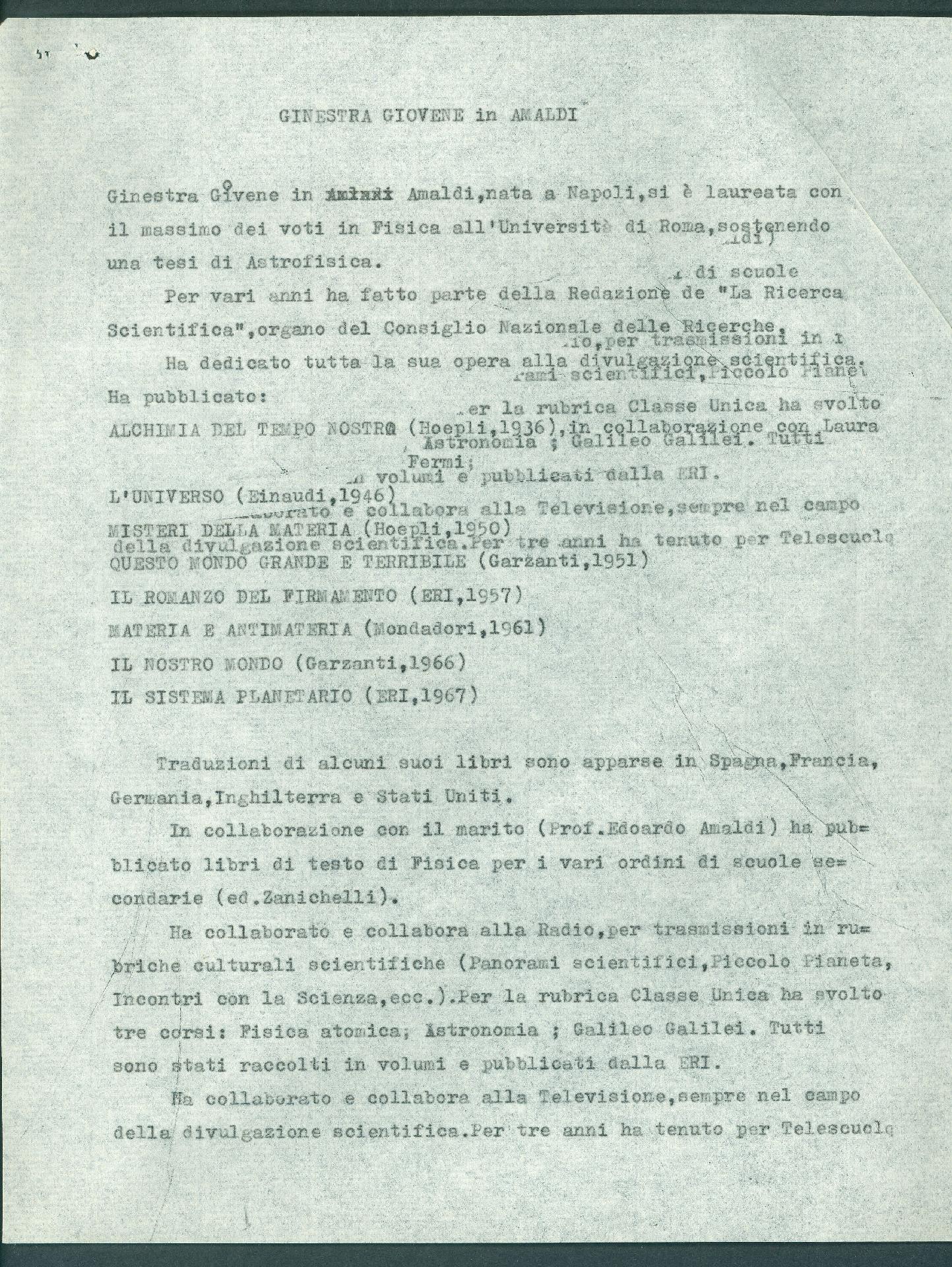
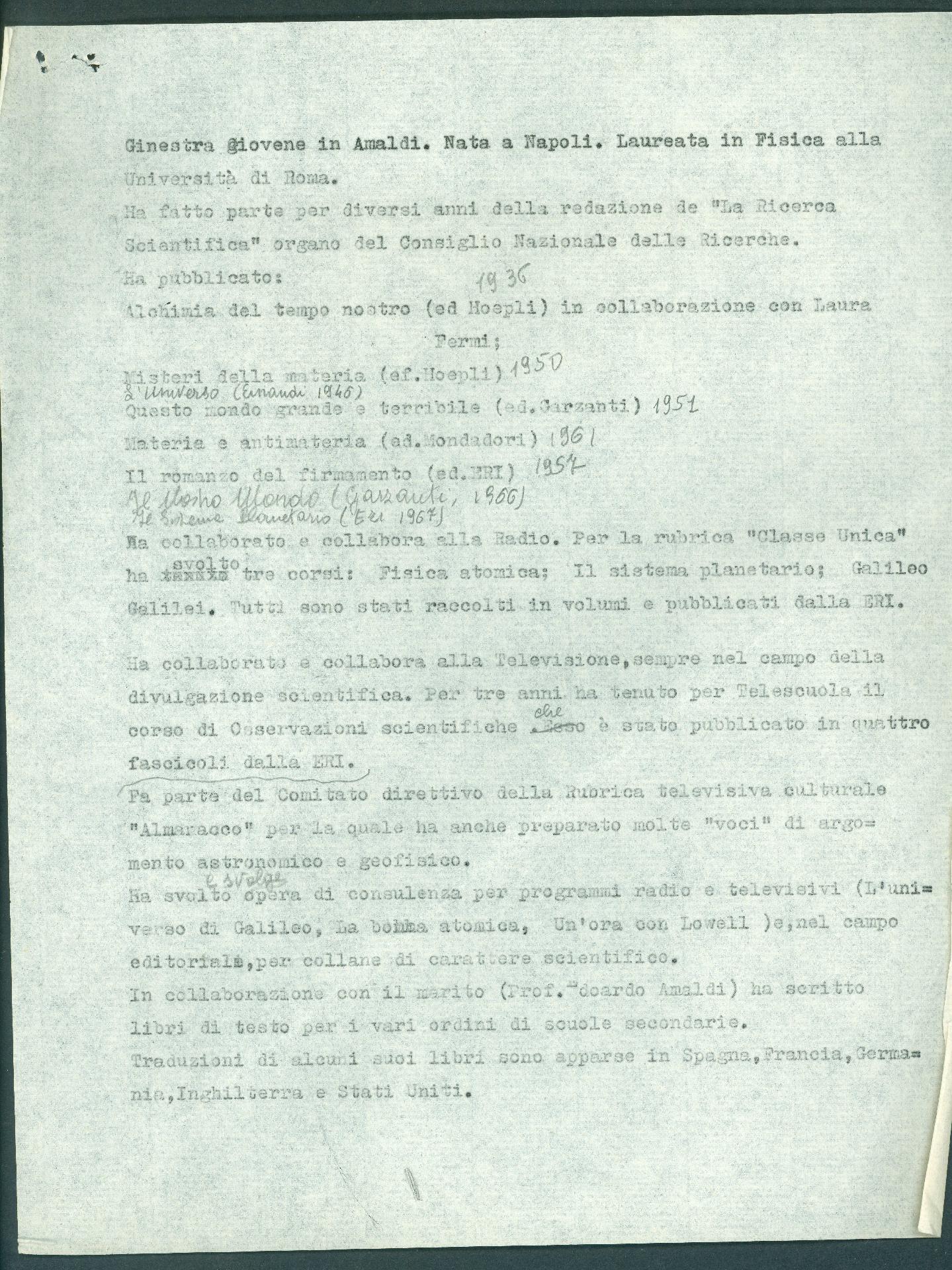

BIBLIOGRAPHIC NOTE
Ginestra Amaldi, Laura Fermi, Alchimia del nostro tempo: l'ipotesi atomica. La scoperta della radioattività, Milano, Hoepli, 1936
Ginestra Amaldi, L'Universo, Roma, Edizioni Leonardo, 1946
Ginestra Amaldi, I misteri della materia: atomi, nuclei, raggi cosmici, Milano, Hoepli, 1950
Ginestra Amaldi, Questo mondo grande e terribile, Milano, Garzanti, 1951. trad. francese: Notre Univers, Paris, Fernand Nathan,1951; trad. spagnola: Tu Mundo, Barcellona, Daimon, 1952; trad. inglese: Our World and Universe around it, New York, Abradale Press
Ginestra Amaldi, Fisica atomica, Torino, ERI, 1954
Ginestra Amaldi, Il romanzo del firmamento, Torino, ERI, 1957
Ginestra Amaldi, Materia e antimateria, Milano, Mondadori, 1961. trad. inglese: The Nature of Matter, Chicago, Univ. Chicago Press, 1966
Edoardo Amaldi, Ginestra Amaldi, Corso di fisica ad uso dei licei classici. Rielaborato dal testo di Enrico Fermi, Bologna, Zanichelli, 1957
Ginestra Amaldi, Il progresso della tecnica, Torino, ERI, 1961
Ginestra Amaldi, Astronomia: il sistema planetario, Torino, ERI, 1963
Ginestra Amaldi, Galileo Galilei, Torino, ERI, 1964
Ginestra Amaldi, Il nostro mondo e l'universo che lo circonda, Milano, Hoepli, 1966
Ugo Amaldi, Atomi di famiglia, in «Golem, n. 3», marzo 2003
Maria Rosa Protasi, Ginestra Amaldi, in «Italiane.2. Dalla Prima guerra mondiale al secondo dopoguerra. A cura di Eugenia Roccella, Lucetta Scaraffia», ROma, Presidenza del Consiglio dei Ministri. Dipartimento per le pari opportunità, 2003

 help with your research
help with your research

